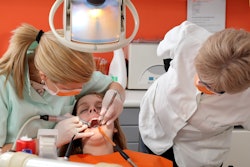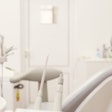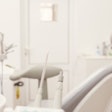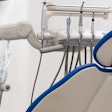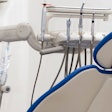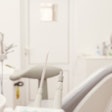
Strengthening dentistry hinges on navigating changes in technology, patient expectations, workforce shortages, and the demographics and expectations of employees, according to leaders from the ADA and the Association of Dental Support Organizations (ADSO) at an October webinar.
The ADA and ADSO need to use their combined strengths to meet these challenges, according to leaders from the two powerful dental organizations. The messaging signals a shift toward collaboration, which is necessary to not only survive the myriad challenges facing the profession but also to thrive in rapidly changing times, the leaders said.
"We need clinicians to provide the highest level of care," ADSO President Emmett Scott said. "The ADA is providing lobbying, the government affairs, upgrading the clinical pieces of care. All of the back office -- the HR [human resources], IT information technology ... That's an ADSO responsibility to focus on the business issues."
Priority No. 1: Building a future workforce
Currently, the industry is facing a devastating workforce shortage that is expected to linger. In any given month, 4 out of 10 dental practices are hiring dental hygienists and assistants, and about 30% from each profession said they expect to retire within five years, according to recent data from the ADA's Health Policy Institute (HPI).
What needs to be a top priority for preeminent dental associations is building a large pool of dental assistants and dental hygienists. ADSO Executive Director Andrew Smith said the group is working with policyholders in states to strategize how to collaborate with technical schools and other organizations to meet the growing demand for these dental professionals.
ADSO is very focused on working with the ADA to develop the next generation of the dentistry workforce by talking to students sooner rather than later. And by sooner, ADSO is referencing high school students so that teenagers are already thinking about the different practice modalities and opportunities, Smith added.
"It's on us to develop the next future generation of the workforce," Smith said.
Priority No. 2: Tackling reimbursement rates
During the past 12 months, practices have experienced higher expenses, but 57% of clinicians reported that the average level of reimbursement from all insurance companies stayed the same, according to HPI data released in October. Additionally, 1 in 4 dentists indicated that their insurance rates have decreased.
Stagnating insurance reimbursement rates have increasingly been an issue. Now, the ADA and ADSO are working together with lawmakers and stakeholders to tackle broad practice issues, including low reimbursement rates and coding with third-party payers, Smith said. The organizations are also tackling the growing student debt crisis.
Priority No. 3: Addressing generational differences
ADA Executive Director Dr. Raymond Cohlmia noted that dentistry must be prepared for the values and demands of future generations.
In five to seven years, baby boomers -- potentially self-described workaholics -- will be almost completely gone from the workforce. The current younger workforce desires more work-life balance, aspiring to spend more time working on patients and less time worrying about payroll, insurance, and other operational issues. This generational shift is part of the reason more are working at dental support organizations, Cohlmia said.
"By 2032, we'll see a different shift," Cohlmia said "We need to be positioned for their values."
Also, younger generations view the workforce as "mostly portable," meaning workers don't have to be tied to one office in a particular state if they work at larger organizations, Smith said. If a significant other has a job offer elsewhere, for example, a dentist working at a dental support organization can more easily move to another affiliated practice.
Since women now comprise about 50% of the current students in dental school, flexible schedules also will be more important, Scott said.
"Women have reported that they have a 20% workload outside of work (that men have not reported)," Scott said. "Shift work is going to become more critical -- working two or three days a week, mornings, weekends. How do you do it with a single practice? You have to support that dentist."
What's next for dentistry? Technology and oral-systemic health
Leaders within the ADA and ADSO also shared their thoughts about what they envision for the future of dentistry in the next three to five years.
Technology will continue to be a game changer, noting that greater use of cone-beam computed tomography scans and artificial intelligence, for example, will help practices provide more efficient, patient-centric care, according to the two organization's leaders.
"The use of technology will show the need for ongoing treatments and how it will reduce the costs of healthcare overall," Smith said.
For Scott, the future involves better providers giving better care, a goal that will require collaboration not only within dentistry but also between dentists and other healthcare specialties. One challenge is that 40% to 50% of the population doesn't visit the dentist, Dr. Cesar Sabates said, who was president of the ADA from 2021 to 2022.
"Oral health is health," Sabates said, noting that dentists will need to become more proactive in screening for systemic conditions, including diabetes and hypertension.
The leaders suggest that the bottom line is that these challenging times make it difficult to do it all, let alone do it well, alone.
"Dentistry is entering an era in which the patient wants to know you but never talks to you," Scott said. "They want to connect with you but do it through texting or other platforms. How are we going to do that together? Work on it as associations and with individual groups."





